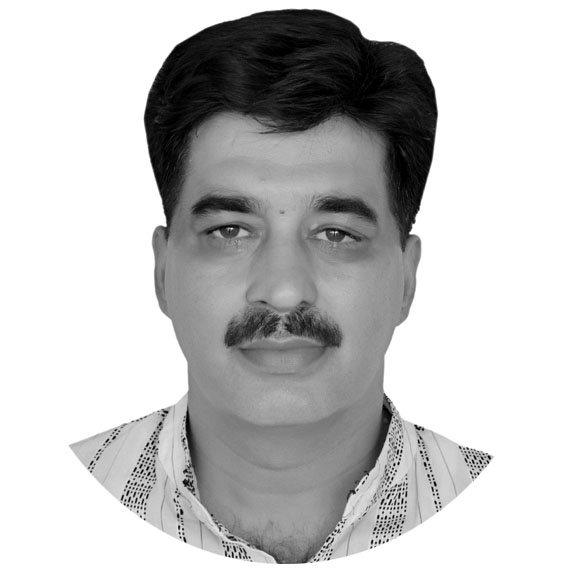Raja Muhammad Sajjad Khan
INDIA had landed her forces in Kashmir on 27 October 1947 and occupied a major portion of the state against the will and wishes of the people of Kashmir and in blatant violation of the partition plan. India claimed that the ruler of Kashmir Maharaja Hari Singh had signed an instrument of accession on 26 October 1947. This instrument of accession was incorporated in the Indian Constitution as Articles 370 and 35-A. Article 370(3) of the Constitution empowers the President to abrogate Article 370 on the recommendation of the Constituent Assembly of Jammu and Kashmir. This article allows J&K to have a separate flag and a Constitution. Article 35-A was added in the constitution through a Presidential Order “The Constitution (Application to Jammu and Kashmir) Order, 1954”. This Article allows Jammu and Kashmir to define the permanent residents which were later on defined in Article 06 of the Constitution of Jammu and Kashmir, 1957. This Article was the extension or reproduction of State Subject Notification No. I-L/84 dated 20 April 1927 and notification No. 13/L dated 27 June 1932.
On 5 August 2019 Article 370 was abrogated by the Presidential Order and on 6 August Indian Parliament had passed the Jammu and Kashmir Reorganization Bill, 2019. Through this act, India had divided Kashmir into two union territories: Jammu and Kashmir and Ladakh. The identity of the state has been snatched and by the revocation of Article 35-A the permanent residence law which was enforced from 1927 had been abrogated to change the demography of Kashmir. The Constituent Assembly of IOJK was dissolved in 1957, in June 2018 the Legislative Assembly was dissolved, and Governor’s Rule was imposed and in December 2018 the presidential rule was imposed in IOJK. This constitutional coup is also a violation of the Indian Constitution. According to Article 370, the consent and approval from the Government of IOJK was required but at that time there was President’s rule and the nominee of the President was sitting as governor which does not represent the will of the people. This Act was violative of Article 3, which provides the procedure for a change in the areas of the state. The Indian Parliament is not empowered to bifurcate the state and for this purpose consultation and approval of the State legislature is necessary. This amendment was approved in haste violating the parliamentary procedure of legislation.
The prime objective of this unconstitutional move is to change the demography of Kashmir. The ruling BJP, the political wing of terrorist Hindu militant organization Rashtriya Swayam Sevak Sangh (RSS), is working under Hindutva idealogy. The steps were taken by Indian Govt in the last one year proves that they are trying to convert Muslim majority state Kashmir into a Hindu majority state through demographic engineering. In May 2020 the Indian Govt issued the Jammu and Kashmir Grant of Domicile Certificate (Procedure) Rules 2020 to give permanent Kashmiri citizenship status to non-Kashmiris. These rules state that the Indian citizens who have resided for 15 years or who have studied for 7 years in J&K, children whose parents have served the Indian Government in J&K for 10 years, refugees from West Pakistan in J&K, members of the Valmiki community and women residents who married a non-resident of J&K are eligible for domicile. To date more than 25,000 domiciles have been issued to Indians. The new rules provide a very easy and expedited process for the acquisition of domicile for non-Kashmiris and very lengthy and difficult processes for the permanent residents of Kashmir. For the non-Kashmiris a district officer issues a domicile certificate within a strict 15-day time limit. Officers that fail to comply with this timeline face a fine of 50,000 IRP. This process can also be completed online. On the other hand, existing permanent resident certificates (PRC) of indigenous Kashmiris exist only as evidentiary proof of their residence and must be submitted to their district office to obtain a new domicile certificate.
On 17 July 2020, the administrative council of IOJK had approved an amendment to the Control of Building Operations Act, 1988 and the J&K Development Act, 1970 to allow notifying any areas in the territory as “strategic areas”. This means that the land on which existing camps/cantonments of the Indian armed forces located in various areas or where new camps/cantonments they think is important would be acquired. This construction will be permanent and having residential blocks for families of occupational forces. These Indian actions are a blatant violations of UNSC Res. No 91(1951) and 122(1957), which clearly states that any action is taken or attempt to take to determine the future affiliation or shape of the entire state or any part would not constitute the disposition of the state in accordance with the principle of the right to self-determination. The shifting of non-Kashmiris in IOJK is also a violation of Article 49 of 4th Geneva Convention of 1949, Article 85(4)(a) of AP-I of Geneva Convention and Simla Agreement. According to Article 8(2)(b)(viii) of ICC statute India is committing war crimes. — To be continued.
—The writer is PhD (Law) Scholar at IIU, Islamabad.










